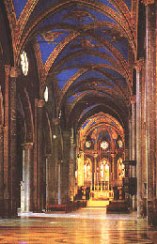Past vs. Present: The Ara Pacis and Mausoleum of Augustsus
Rome has a history spanning well over 2,000 years. Kings, emperors, popes, prime ministers, and dictators alike have all laid claim to the Eternal City and the Campo Marzio, the “Field of Mars” in English, is the epitome of this varied timeline. Campo Marzio comprises the northern-most part of central Rome and includes monuments such as the Piazza del Popolo and the Spanish Steps. Campo Marzio is the oldest continuously inhabited part of Rome. As such, Campo Marzio has a very representative cross-section of the city’s history within its borders: obelisks that were built by Egyptian pharaohs and brought to Rome by conquering emperors, Baroque, Gothic, and Renaissance churches, ancient Roman ruins, towering fascist building developments, and even a museum built by American architect Richard Meier.
The area that’s the focus of this post is the area surrounding the Mausoleum of Augustus, which is near the southernmost border of Campo Marzio. The Mausoleum itself was built in 28 B.C. by Emporer Augustus as a reaction to Marc Antony’s recent decision to be buried in Egypt when he died. The people of Rome took this as an insult and, to prove himself a more loyal Roman than Antony, Augustus had his mausoleum built when he became Emperor to show his intentions. In truth, it functioned as a propaganda tool much like the buildings that surround it in modernity functioned during the reign of Benito Mussolini. The buildings and piazza that surround the Mausoleum were designed by Vittorio Ballio Morpurgo in the 1930s along with a museum that housed another ancient Roman propaganda tool, the Ara Pacis Augustae.
The Ara Pacis was commissioned by the Roman Senate in 9 B.C. to commemorate the beginning of the Pax Romana, which was a period of peace brought about by the preemptive wars of Emperor Augusts. The monument itself was lost when the Roman Empire collapsed and maintenance on Roman monuments was abandoned. Over successive years of flooding, the Ara Pacis was slowly covered in silt and left to ruin. Pieces of the Ara Pacis began to be discovered as early as the 16th century, but the monument was not restored in its entirety until Mussolini mounted a dig to recover the majority of the fragments. Utilizing a technique that involved using liquid nitrogen in hollow steel pipes to freeze the soil and thus allow digging underneath a building that would have otherwise been unstable, Mussolini was able to resurrect the monument in time for the 2000th birthday of Augustus in 1937. After its reconstruction, Mussolini had Mopurgo design a museum to house the Ara Pacis. This museum was constructed in just under four months using the cheapest materials and quickest methods possible in order for it to open in time and, as such, after only a few decades, was in a terrible state of disrepair. The then-mayor of Rome hired Richard Meier to design a new cover building and museum for the Ara Pacis, which opened in 2006 to much controversy.
The site itself is an interesting one that spans over two millennia of history. The current museum is a redesign of a seventy-year-old piece of fascist propaganda that contains a piece of Imperial Roman propaganda that was used by the fascists to pretend to the power of Imperial Rome. The museum itself is surrounded by buildings that are bedecked in fascist propaganda, saying things along the lines of “It is always springtime for the strong people of Italy.” and all of these face the Mausoleum of Augustus, which is a propagandistic appeasement ploy even older than the Ara Pacis itself. It’s amazing to see how although the historical figures that shaped this area may have spoken different languages, worn different clothes, and were called by various different titles and styles, their purposes and goals were the same: to be in power. Areas like this are frequent throughout the city of Rome and serve as a reminder of what people will do to realize their will and how they often use the built environment to help them do so. Future blog posts will detail more of these sites and show the ways in which modernity and antiquity collide and intermingle in the Eternal City.





